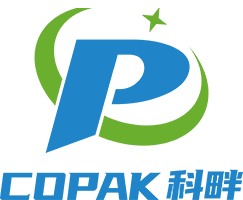In the modern beverage packaging industry, PET cans and bottles represent a winning combination of light weight, durability, and recyclability. Achieving high efficiency and strict food safety compliance requires a tightly controlled, end-to-end production process. The journey begins with material selection, where PET resin pellets serve as the backbone, often blended with recycled PET to balance sustainability, cost, and performance. The moisture content of PET is critically small; therefore, the drying stage uses a dehumidifying dryer at approximately 160 to 180 degrees Celsius for four to six hours, reducing moisture to below 0.02 percent. This preemptive step minimizes bubble formation and material degradation during later processing, preserving optical clarity, mechanical strength, and dimensional stability. Accurate control of drying temperature, cycle time, and feed moisture ensures repeatable material behavior across long production runs, a prerequisite for consistent CAN body quality and a stable supply chain.
Following material preparation, preforms are created through precision injection molding. Dried PET pellets are melted at roughly 260 to 280 degrees Celsius and injected under high pressure into molds that shape test-tube–like preforms with a threaded neck designed to accommodate closures. Rapid cooling via water or air solidifies the preforms, which are then ejected and subjected to meticulous defect inspection. The most consequential variables at this stage include melt viscosity, mold temperature, injection pressure profiles, and cooling rate. Small deviations in wall thickness or residual stresses at this stage can propagate into the final can, influencing wall integrity and seal reliability. For specialty products requiring enhanced heat resistance or barrier properties, a secondary conditioning step may be deployed.
Preform conditioning, though optional, adds valuable functionality for hot-fill applications or extended shelf life. Heat setting elevates the temperature resistance of the resin, enabling safe thermal processing downstream. Barrier coatings, such as EVOH or aluminum oxide layers, impede oxygen ingress and light transmission, significantly extending beverage stability. When these treatments are applied, precise monitoring of temperature distribution and processing uniformity becomes essential, ensuring every preform meets stringent tolerance bands before entering the blow molding stage. These surface and material adjustments, while increasing complexity, yield tangible benefits in product longevity and consumer perception of quality.
Blow molding transforms preforms into the final can body. The process begins with reheating the preforms to a controlled temperature window, typically 90 to 120 degrees Celsius, which concentrates heat on the body while the neck remains relatively cool to preserve neck geometry. The preform is then placed into a blow mold, where high-pressure air—usually in the range of 20 to 40 bar—expands the polymer into the cavity, forming the final can with precise dimensions and uniform wall thickness. Critical to this step is achieving a homogeneous heat distribution across the can surface, maintaining neck cooling to prevent deformation at the closure interface, and ensuring the resulting wall thickness is evenly distributed. Immediate and uniform cooling solidifies the shape, enhancing rigidity and dimensional stability, which translates into reliable performance during filling, capping, and distribution.
After shaping, trimming removes flash and sharp edges, producing a safe, aesthetically pleasing rim. Quality inspection follows, integrating visual evaluation for surface defects and discoloration, laser or optical measurement for height, diameter, and wall thickness, and leak testing to verify seal integrity. Barrier performance testing, particularly for oxygen and moisture transmission, is essential when high-demand products require extended shelf life. These checks form a quality loop: if a parameter drifts beyond tolerance, feedback prompts corrective actions before production deviates further. The combination of precise metrology, non-destructive testing, and standardized acceptance criteria preserves product uniformity across batches and geographies.
Decorative printing and labeling may be employed to enhance brand visibility. Technologies such as digital printing, offset printing, and shrink-sleeve labeling provide different aesthetic outcomes and cost implications. Inks intended for contact with food must be food-grade and UV-stable to resist fading and abrasion. Post-application curing, whether via ultraviolet light or heat, ensures ink adhesion and color durability, so that the decaled or printed surface remains vibrant through the product’s shelf life and handling. The choice of decoration method should align with brand strategy, production throughput, and regional regulatory considerations, particularly around print durability and migration concerns.
Sterilization and packing finalize the readiness of cans for filling. Before filling, cans undergo sanitation through hot water, steam, or ozone to meet stringent food hygiene standards and remove potential contaminants. After sterilization, cans are bulk-packaged into cartons or plastic crates in a manner that protects integrity during transit. Maintaining a sterile or aseptic environment prior to filling is crucial to minimize microbial risk and preserve product quality throughout distribution networks. Ongoing quality control continues in the packaging zone, where temperature, humidity, and handling are monitored to reduce defect rates and ensure recyclability goals are met.
Sustainability remains a guiding principle throughout the PET can and bottle lifecycle. The industry often seeks higher recycled content (rPET) without compromising safety or performance, balancing process parameters, polymer morphology, and barrier properties. Efficient material handling, optimized drying, and controlled re-granulation workflows contribute to a consistent supply of high-quality feedstock for the extrusion and molding stages. Moreover, responsible sourcing, energy-efficient equipment, and waste minimization strategies—such as closed-loop water systems and heat recovery—enhance overall environmental performance and public perception of the brand.
In sum, successful PET can and bottle production hinges on meticulous control of moisture management, melt behavior, conditioning and barrier enhancements, blow-molding dynamics, and rigorous quality assurance. Each parameter—whether moisture content, wall thickness tolerance, or cure time—must be defined within a robust process recipe and verified through regular inspection. The result is a product that not only meets stringent food safety standards but also delivers consistent performance, reliability, and brand value in a competitive marketplace.
Post time: Nov-14-2025




